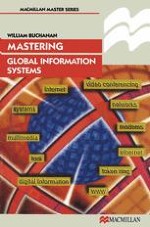1997 | OriginalPaper | Chapter
Transmission Control Protocol (TCP) and Internet Protocol (IP)
Author : William Buchanan, BSc, CEng, Phd
Published in: Mastering Global Information Systems
Publisher: Macmillan Education UK
Included in: Professional Book Archive
Activate our intelligent search to find suitable subject content or patents.
Select sections of text to find matching patents with Artificial Intelligence. powered by
Select sections of text to find additional relevant content using AI-assisted search. powered by
Ethernet, token ring and FDDI provide a data link layer function, that is, they allow a reliable connection between one node and another on the same network. They do not provide internetworking where data can be transferred from one network to another or one network segment to another. For data to be transmitted across networks requires an addressing structure which is read by a bridge, gateway and router. The interconnection of networks is known as internetworking (or internet). Each part of an internet is a subnetwork (or subnet). TCP/IP are a pair of protocols which allow one subnet to ommunicate with another. A protocol is a set of rules which allow the orderly exchange of information. The IP part corresponds to the network layer of the OSI model and the TCP part to the transport layer. Their operation is transparent to the physical and data link layers and can thus be used on Ethernet, FDDI or token ring networks. This is illustrated in Figure 15.1. The address of the data link layer corresponds to the physical address of the node, such as the MAC address (in Ethernet and token ring) or the telephone number (for a modem connection). The IP address is assigned to each node on the internet. It is used to identify the location of the network and any subnets.
